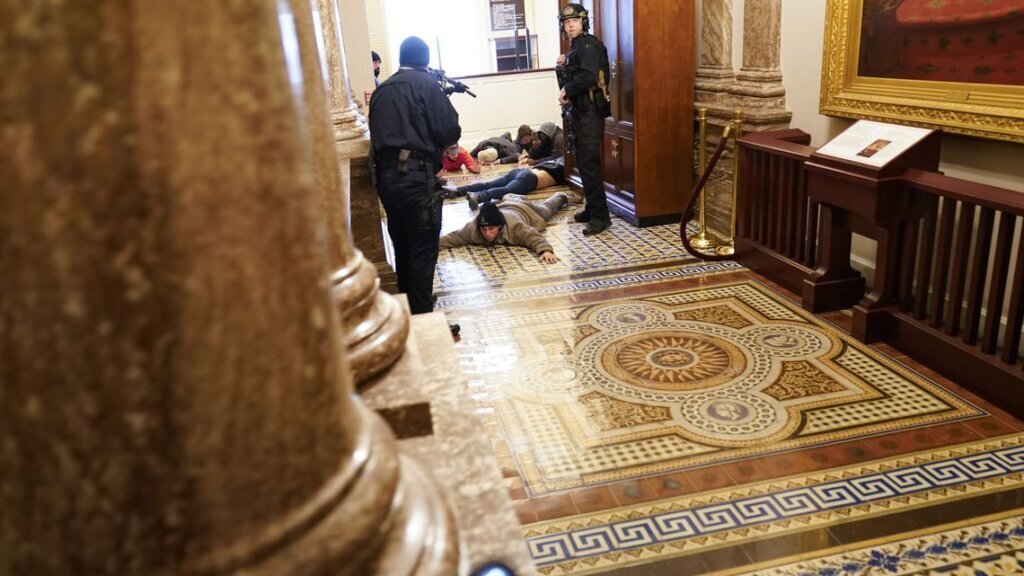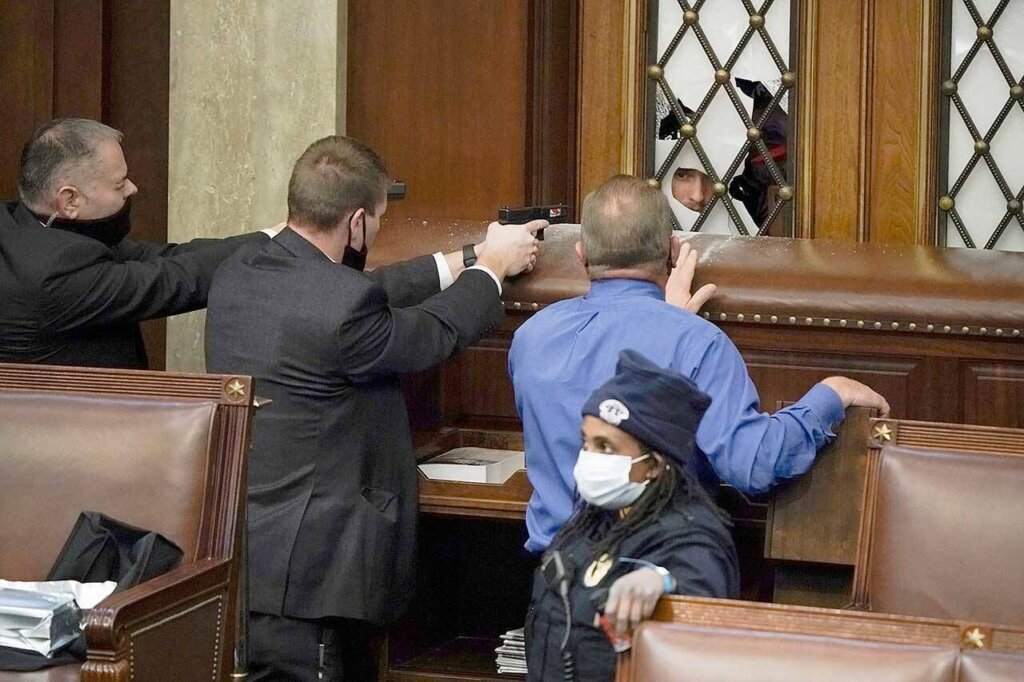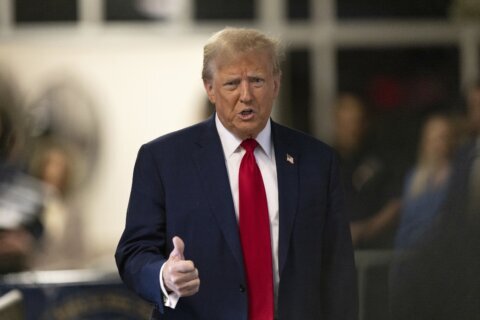Nearly a year ago, there was danger all around us as a marauding mob broke into the U.S. Capitol, intent on halting the peaceful transfer of presidential power.
Initially, as I reported from the Capitol on the certification of Electoral College results from the 2020 presidential election, I had no idea how close the threat really was.
Doors had been locked to the warren of broadcast booths where I work with other members of the media on the House side of the Capitol. But I didn’t know the rioters were only a short distance away.
I didn’t know they were right down the hall until after Jan. 6, when I saw a picture of the rioters on the floor as a Capitol Police officer pointed a gun down toward them as other officers stood nearby.

I immediately recognized where that picture was taken — only steps from where I work every day.
The rioters were just outside the House gallery, where video showed horrified lawmakers jammed in aisles behind chairs.
When the House chamber was under siege, furniture had been pushed against the doors as insurrectionists pounded and tried to get in. Officers trained their guns at the doorway as the standoff continued.

The anger, the fear and the anguish that lawmakers and staff experienced that day has never fully gone away.
And yet, there are still many people who seem content to pretend it didn’t really happen. Or to suggest that it wasn’t as bad as the media reported.
I was there. And it was bad.
Bad enough that several people died that day, including a woman who was shot as she tried to climb through a broken window of the Speaker’s Lounge outside the House chamber.
Bad enough that at least 140 law enforcement officers were injured during hand-to-hand combat with the rioting mob.
Bad enough that members of that mob threatened to hang Vice President Mike Pence and to shoot House Speaker Nancy Pelosi.
Armed camp
One of the most striking symbols of what happened Jan. 6 was the 7-foot, non-scalable fence with concertina wire that went up around the Capitol the day after.
After the attempted insurrection, the Capitol became occupied with thousands of members of the National Guard. It was the most military personnel at the Capitol since the Civil War.
From a personal standpoint, just getting into work each day presented challenges. Some lawmakers said it was like heading into a prison.
At times, entry points changed and the National Guard personnel didn’t have authority to let individuals onto the grounds. They were on duty to support the Capitol Police.
On these days, I rode my bike, so getting around the fenced perimeter wouldn’t take as long.
Tensions remained high, but it became clear over a period of weeks and months that members of Congress, in both political parties, wanted the fence to come down.
The outer perimeter came down in March, but the last part of the fencing wasn’t taken down until July, more than six months after the insurrection.
Insurrection revisionism
Originally, members of both parties in Congress sharply criticized the violence on Jan. 6.
While he didn’t vote to convict Donald Trump at his second impeachment trial, Senate Minority Leader Mitch McConnell said the former president was “morally responsible” for the attack and that the mob had been “fed wild falsehoods” related to the election.
“American citizens attacked their own government,” McConnell said. “They used terrorism to try to stop a specific piece of democratic business they did not like.”
But, only a few months later, some House lawmakers began trying to change the narrative of what happened.
Rep. Andrew Clyde, R-Ga., infamously compared what happened at the Capitol to a “normal tourist visit” and claimed that calling it an insurrection was “a boldfaced lie.” He referred to people walking through the Capitol taking videos and pictures.
What Clyde didn’t address was the fierce fighting that went on for hours outside the West Side of the Capitol, as officers tried in vain to keep people from invading the iconic building.
Clyde himself helped barricade the House chamber doors where rioters were banging on the other side, attempting to get to lawmakers on the floor.
What’s it like inside the Capitol now?
Walking through the Capitol during quiet moments, such as the recent holidays, it is hard to comprehend what happened nearly a year ago.
I look out the windows on the west side and remember the mass of humanity and its dull roar coming toward the Capitol.
The sound of an almost medieval struggle between angry rioters and overwhelmed police officers.
On entering the Capitol recently, I greeted an officer, knowing he was in the midst of the turmoil that day and had to deal with racial epithets, as well as the violence.
I walk through the Rotunda, which is still awe-inspiring. It’s also troubling to think that the rioters were here, some of whom had ransacked the nearby office of House Speaker Nancy Pelosi.
There are still no visitors allowed in the Capitol, though that is due to the pandemic.
The Capitol, nearly a year after the Jan. 6 insurrection, is not “back to normal.”
There is still a high level of distrust between Democratic and Republican lawmakers, which goes well beyond usual politics.
At least 135 Capitol Police officers have left or retired from the force since the start of the year, as the department tries to implement reforms.
For many who work here in the Capitol, Jan. 6, 2021, seems like it was both a lifetime ago — and only yesterday.
It certainly was a day that will never be forgotten. Nor should it be.








